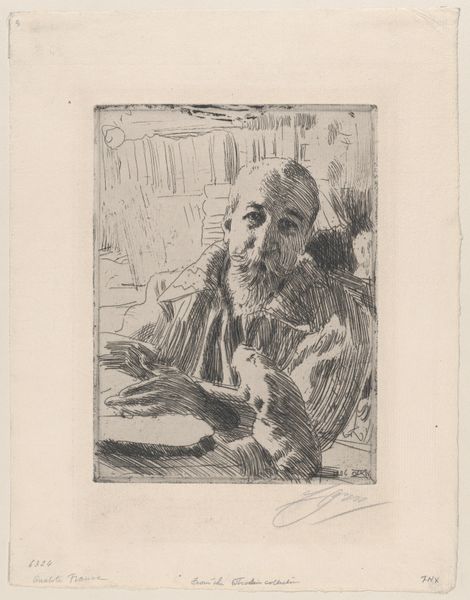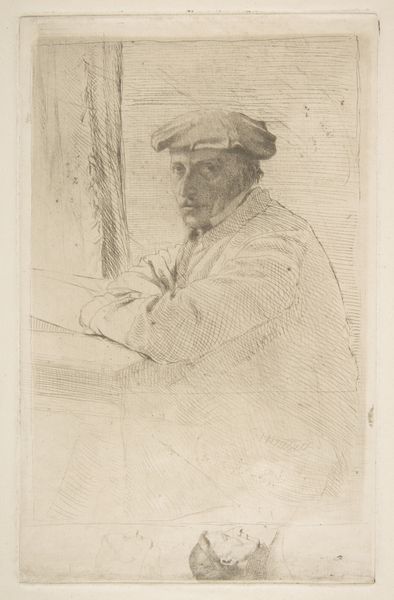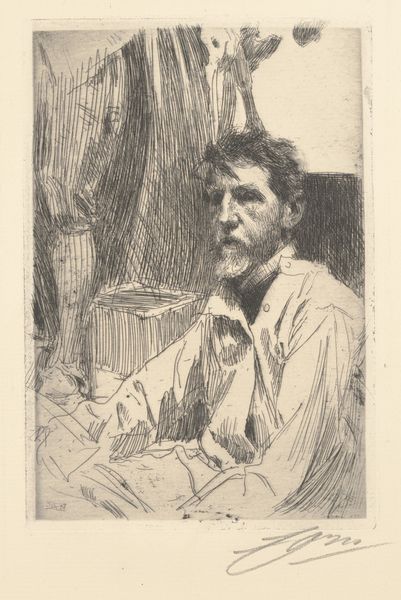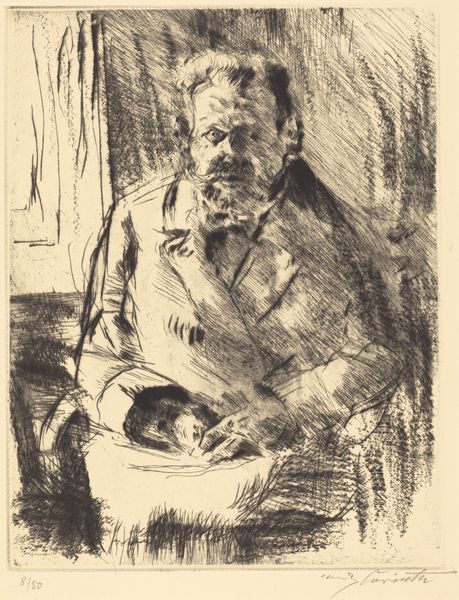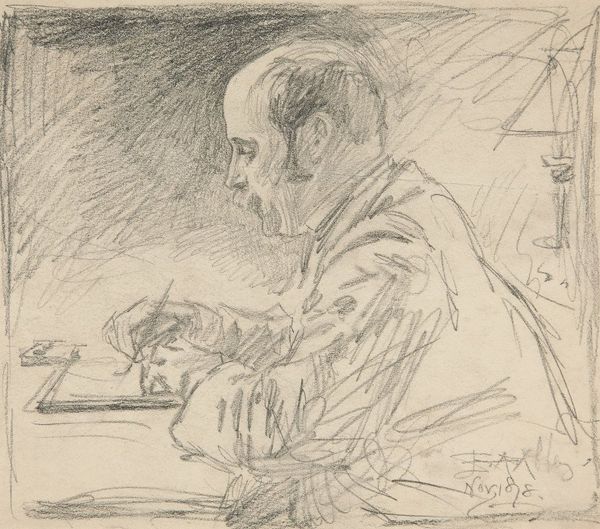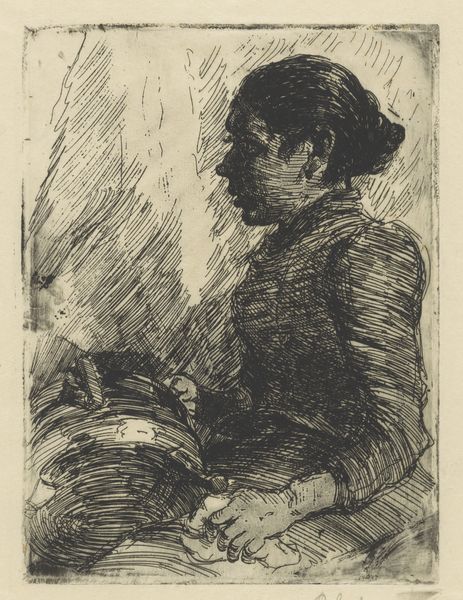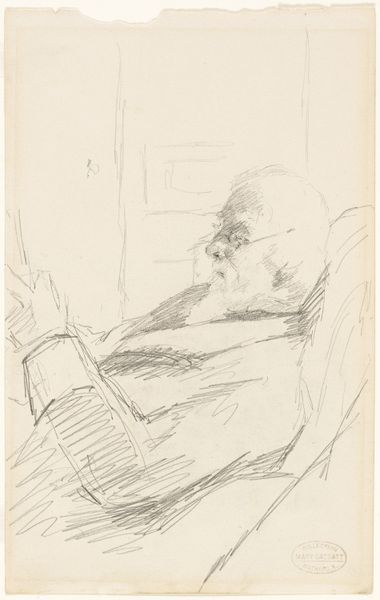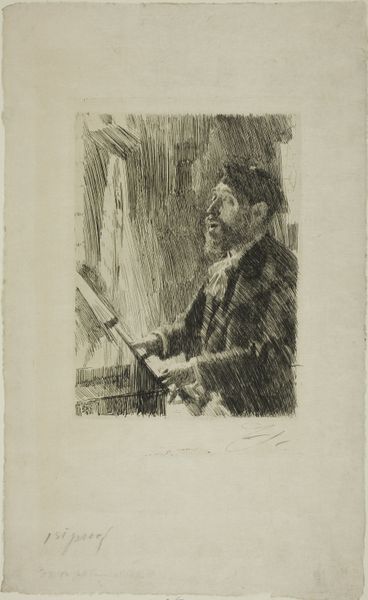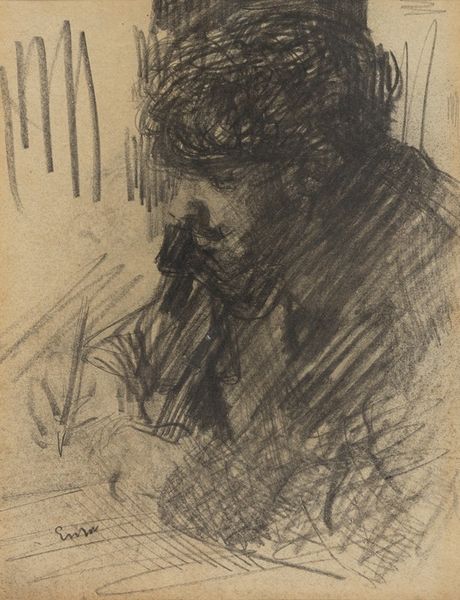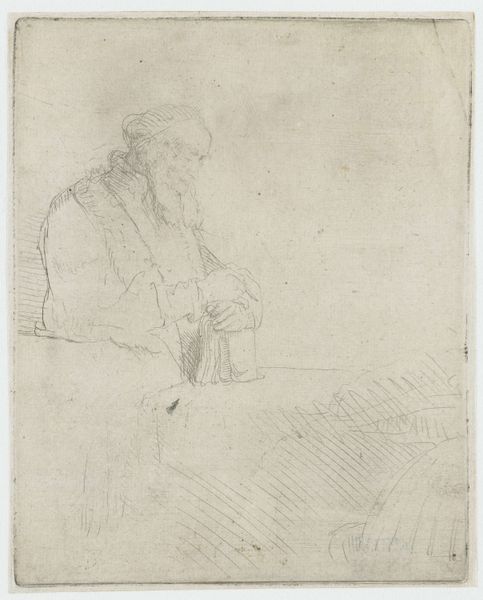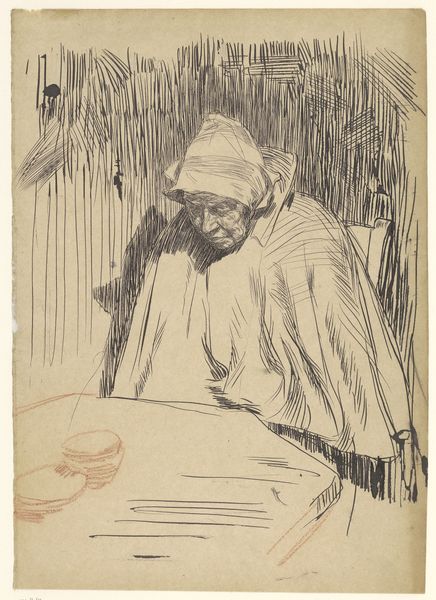
Copyright: National Gallery of Art: CC0 1.0
Editor: We're looking at Anders Zorn's etching of Anatole France from 1906. It’s incredible how much detail he gets with just etched lines. What can we discern about its making? Curator: I'm drawn to the repetitive nature of etching. Zorn's skilled use of this printmaking technique allowed for reproduction and dissemination, influencing how France’s image circulated among different classes. How does this availability impact the aura of the subject, especially considering France was a Nobel laureate? Editor: So the etching process, being more reproducible than a painting, makes the image and, therefore, perhaps the intellectual more accessible? Do you think that democratizes art and ideas? Curator: Exactly! The act of creating multiples inherently shifts the context of consumption. This pushes us to consider: who owned these prints? Where were they displayed? Etchings were often collected, bound into albums, and traded, thus becoming part of a network of exchange. Understanding this informs how we view the reception and cultural value placed on figures like Anatole France during that period. How does this materiality compare to our image saturated world today? Editor: It definitely puts a new perspective on how images used to circulate and the value that was placed on their physical presence. Thank you. Curator: Thinking about art's material and social life gives it meaning. Hopefully this encourages closer consideration.
Comments
No comments
Be the first to comment and join the conversation on the ultimate creative platform.
